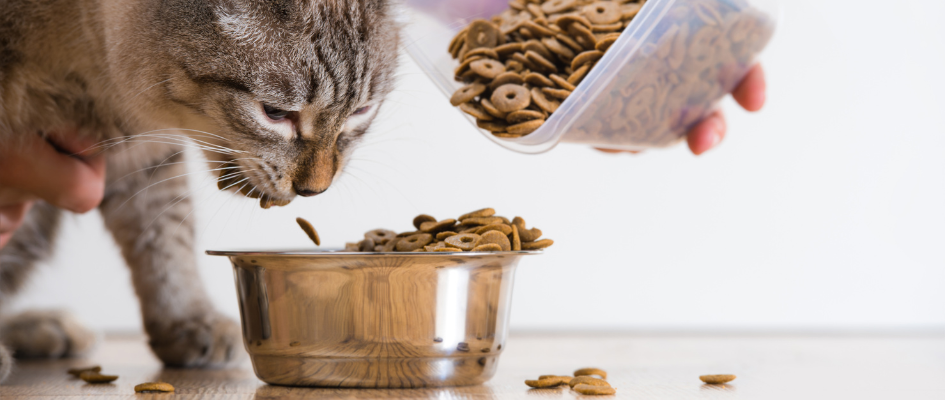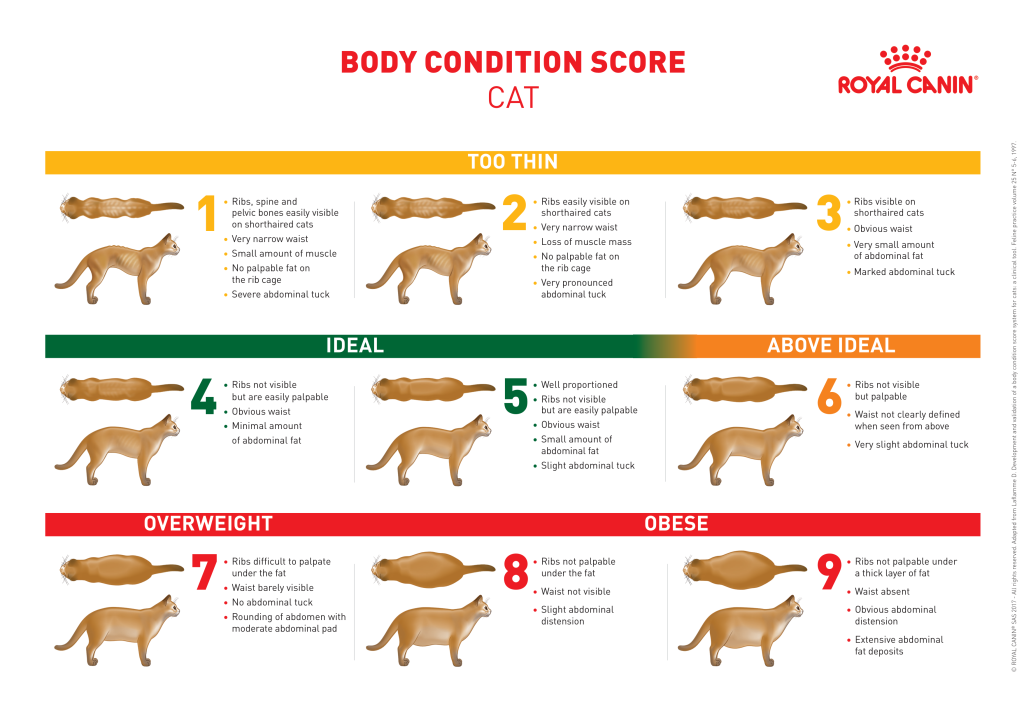Maintaining a Healthy Cat Weight
Ensuring your furry friend maintains a healthy cat weight is crucial for their overall health and happiness. Much like us humans, cats can suffer from health issues if they’re too thin or too plump. It can be a bit tricky to gauge a cat’s ideal weight due to its body size and shape, especially when its fur (which is abundant in most breeds) hides their physique.
Interestingly, there’s a noticeable gap between what owners perceive as a healthy cat weight and the reality of the situation. Some owners might think their cats are a tad skinny, when in fact, they might be carrying a few extra pounds. It’s an understandable oversight if you’re not sure what signs to look for.
Risks of Obesity in Cats
Being overweight isn’t just about aesthetics for cats; it’s a genuine health concern. Chubby cats face an increased risk of various health complications, from conditions like diabetes and pancreatitis, often linked to fatty diets, to arthritis and beyond. Excess weight can also pave the way for skin issues and even elevate the risk of skin cancer.
A cat carrying extra weight might show reduced mobility and a diminished zest for play. This can affect their overall quality of life and general contentment. Recognising these potential issues early is vital, as many of them can be avoided with the right care.
Monitoring Your Cat’s Weight
Keeping a regular check on your cat’s weight is undeniably essential for their health. It helps in spotting any significant weight fluctuations that might hint at health concerns or underlying illnesses. By being vigilant about their weight, you can ensure they stay within a healthy range, minimising the chances of weight-associated health issues.
Knowing the ideal cat weight for your specific cat also aids in feeding them just the right amount, avoiding overfeeding. Routine weight assessments, coupled with occasional vet visits, offer a comprehensive view of your cat’s health, ensuring that they enjoy a lengthy, healthy, and vibrant life. You can register your cat with us for check-ups if you are concerned about its weight, or have any other concerns to do with your cats health. We have plenty of practices in the London area if you need to bring your pet in for an examination.

Determining the Ideal Cat Weight for Your Cat
Variations in Weight by Breed
In order to ensure that your cat maintains a healthy cat weight, it’s crucial to grasp the factors that can influence their weight, such as breed, age, and gender. While weight ranges can offer a general guideline, it’s essential to seek tailored advice from professionals who cater to your cat’s unique needs.
For instance, a cat might typically weigh between 3-6kg, but this can differ between males and females, and breed. Mixed breed cats can be a tad more complex, as they might not align perfectly with standard weight categories. Hence, it’s vital to remember that these weight ranges serve as a guide, and it’s always best to get expert advice tailored to your specific feline.
Signs of an Overweight Cat
Identifying an overweight cat can sometimes be a bit of a puzzle, especially when their fur conceals their true physique. However, there are tell-tale signs to be on the lookout for. A cat carrying extra weight might lack a defined waist and have a more rounded belly. If, when they stand, there’s a noticeable layer of fat dangling from their belly, it’s a clear sign of them being overweight. Struggling to feel their ribs because of a fatty layer or spotting significant fat deposits along their spine are also indicators that your cat might be a bit on the heavier side.
Your vet will give your cat a “body condition score” out of 9. A score between 4-5 indicates a normal weight, while 6-9 is overweight to obese.
An underweight cat with a score of 1-3 can indicate an underlying illness, and your vet may recommend further investigations. Weight loss is not normal in older cats.
How to Assess Your Cat’s Weight at Home
While it’s paramount to have your cat’s weight evaluated by a vet, keeping tabs on it at home is equally vital for their well-being. The Body Conditioning System is a handy tool, that offers a visual guide to help you assess your cat’s physique. By examining aspects like the prominence and tactile feel of their ribs or spotting a discernible waist, you can deduce if they’re undernourished, a tad plump, or just about right.
Moreover, weighing your cat at home can shed light on any notable weight shifts. But, as any cat owner knows, getting them to stay put on scales can be a little challenging. Strategies like cradling your cat whilst on the scale or employing a carrier might aid in securing a more accurate weight check.

Steps to Achieve a Healthy Cat Weight
Achieving and maintaining a healthy weight for your cat requires a mixture of proper nutrition, regular exercise, and understanding their unique behaviours. While it might seem straightforward, ensuring your cat remains within a healthy cat weight range requires consistent effort. If you aren’t careful, your cat can easily gain weight or lose weight from being overfed or lose weight due to an undetected illness. Weight loss is not a normal sign of old age in cats but is associated with treatable conditions that are more common in our senior cats.
Dietary Adjustments for Weight Management
Effectively managing your cat’s weight often starts with their diet. If you spot a bit of weight gain in your feline friend, it’s a good idea to re-evaluate their food portions. You might think about slightly cutting back on their food or opting for a diet crafted especially for cats that are a tad less active or carrying a few extra pounds.
Such diets usually pack in fewer calories compared to regular adult cat foods, yet they don’t skimp on the essential nutrients. And don’t forget about those treats! It’s vital to monitor the number of treats you’re dishing out, as they can sneak in extra calories without the needed nutrition. If you’re ever in doubt, it’s always wise to have a chat with your vet to craft a diet that’s just right for your cat.
Cats should eat little and often to satisfy their hunger and their hunting instincts. Please see icatcare.org for more information on how we should feed our cats to reduce overeating and begging.
Importance of Exercising You Cat
Keeping your cat active plays a pivotal role in ensuring it stays at a healthy cat weight. An active cat isn’t just in better shape, but they’re also more content. Regular play sessions can help them shed those extra calories and tone their muscles.
Alongside this, sprucing up their environment with climbing setups and scratching posts can spur their natural behaviours, keeping them on the move. Always remember, a cat’s natural curiosity and zest for play can be channeled to boost physical activity, which in turn, helps in keeping their weight in check.
Understanding the Natural Behaviour of Cats
Cats, by their very nature, are inquisitive and lively beings. Their inherent behaviours, such as hunting, climbing, and exploring, play a pivotal role in their mental and physical health. By acknowledging and catering to these behaviours, we can effectively assist in their weight management.
One practical approach is the introduction of feeding puzzles. These gadgets tap into their hunting instincts, requiring them to exert effort for their meals. This approach not only mentally engages them but also ensures they expend calories in the process. By keenly observing our feline friends and grasping their likes and dislikes, we can introduce activities that resonate with their innate behaviours, ensuring they’re always active and happy.
